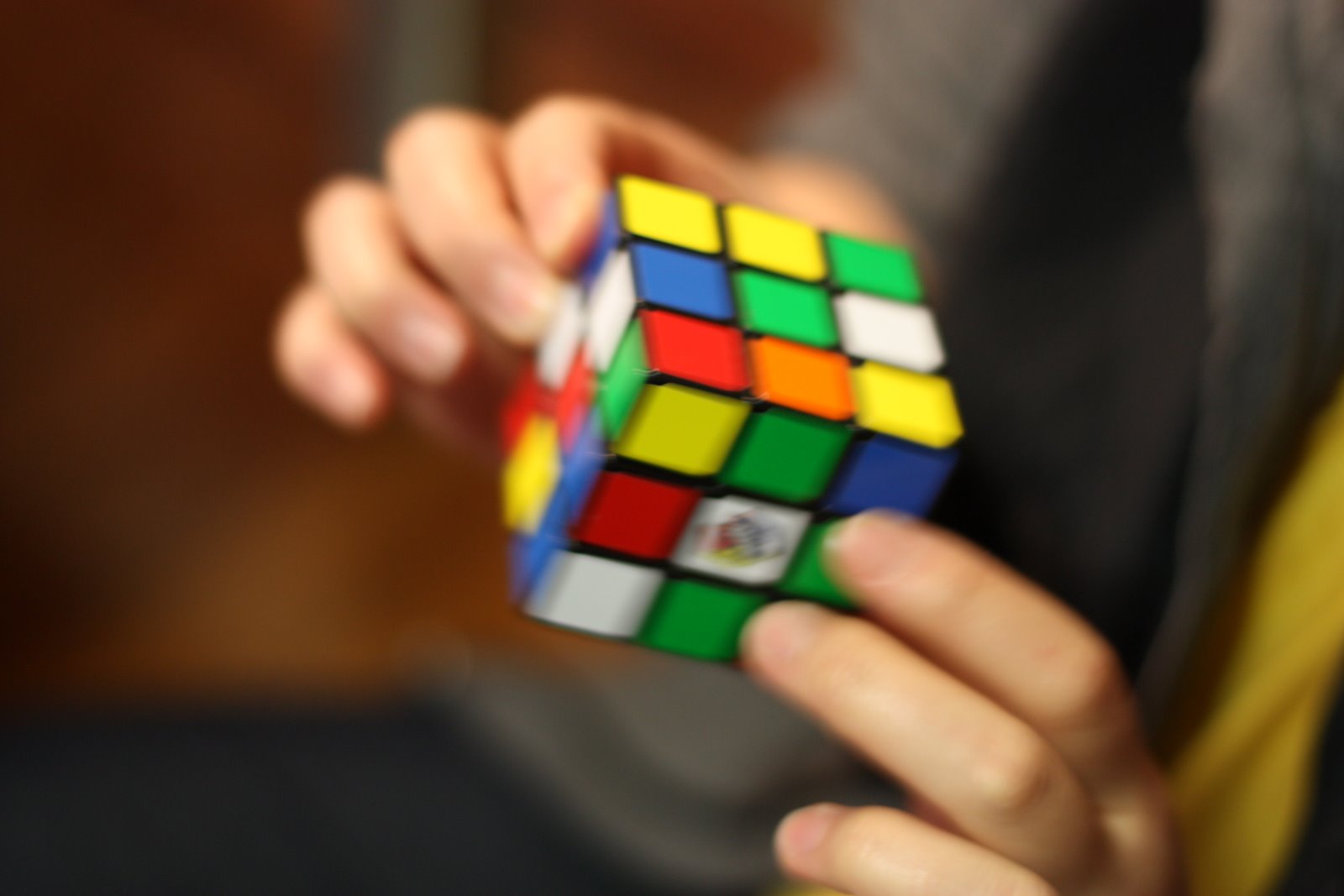
The problem:
Math is more than following someone else's recipe. Math is about prolonged puzzled, creative daring, and brilliant insights.
In my last two posts, I argued that we need to make math as simple as possible. If we're going to be risky, let it be in making mastery too easy.
That sounds snarky, but I mean it seriously. It's our duty to students to all but guarantee that they'll succeed in coming to a full understanding of math.
But that's not enough. It's not enough that all our students excel at math. Our job is also to lead them to love math.
How can we do that? How can we lead kids to mathematical infatuation?
Well, there are a number of ways we'll be pursuing this, but one major route:
Bring in creative puzzles. Puzzles that are challenging. Puzzles that can't be unraveled right away — that need to be put away and considered hours or days later. Puzzles that offer multiple solution methods. Puzzles that require creative daring — trying something that, on the face of it, might seem strange or stupid. Puzzles that, week by week and month by month, grow creativity.
Some of these puzzles will incorporate old ideas — the concepts that the kids have learned in previous years, only shown in an unfamiliar form. Others of these puzzles will preview new ideas — the concepts that the kids will be learning in the following months and years.
What matters is that the puzzles not just be technically difficult, but conceptually clever — that they be about ideas.
As a class, the goal isn't merely to get the right answer, though that's (of course) very important. The goal is also to explore diverse routes for finding that answer.
Good, complex math puzzles typically can be solved using multiple methods. For example, consider a classic math puzzle: What's the sum of all the whole numbers from 1 to 100?
There's a straightforward way to solve this: just add away! 1 + 2 + 3 + 4… + 99 + 100 = 5,050.
There's a clever way to solve this: Look for similar pairs. 1 + 100 = 101 2 + 99 = 101 3 + 98 = 101 … 50 + 51 = 101.
There are 50 pairs. Each pair adds to 101. 50 * 101 = 5,050.
There's a weird way to solve this: Add sets of 10s, and spot the pattern. Sum of 1–10: 55. Sum of 11–20: 155 Sum of 21–30: 255 Sum of 31–40: 355 … Sum of 91–10: 955 And then add all those together: 5,050.
On their own, students will come up with all these methods — and more besides! Our teachers need only give them the encouragement to do so. (According to the excellent book The Teaching Gap, this is actually pretty close to how math is taught in Japan, and to a lesser extent Germany.)
One of these super-challenging problems can be given each week. At the week's end, our students can present their methods. And teachers can lead the class in exploring how, ultimately, each method is exactly the same thing.
This is deep mathematical understanding.
Diverse routes lead to fuller understanding.
But the results could be even better than that. Devising (and valuing) diverse routes to solving puzzles changes the nature of math. No longer is math something out there to be obeyed — it's something in you to be explored.
Diverse routes make math personal.
As a class, we might award a prize each week to the method that is the most clever, and to the method that is easiest to perform in your head, and to the method that is the weirdest!
It's not that there's a single right method, and many wrong methods. It's that there are many methods, each beautiful or ugly or useful or pointless in its own way.
Math is an expression of humanity. It's a human thing, not a robot thing.
To best appreciate these puzzles, we might collect them (and our favorite methods) in binders, and encourage students to re-visit them from time to time.
The focus of this post is to talk about love, not mastery — but mastery is exactly what will result as students slowly internalize these puzzles and their methods. As students write these ideas in their long-term memory, they will become more and more brilliant at mathematical problem-solving.
The SAT and ACT are made up (nearly exclusively!) of these sorts of puzzles. Bizarrely, a curriculum of creative math, of loving math, will end up being the best standardized-test-prep curriculum imaginable.
Not that we're putting much weight on that.
In brief:
Alongside a micro-scaffolded curriculum of tiny mathematical discoveries (based on JUMP Math), our school will also have a curriculum of unguided math puzzles. We might have 1 super-challenging problem per week. Students can work on the puzzles by themselves, or in teams. At the week's end, students will present their methods, and the teacher will help the class explore why each method works.
Our hope is that this won't just help raise kids who are adept at math — but kids who truly enjoy it.